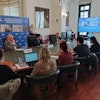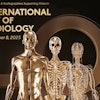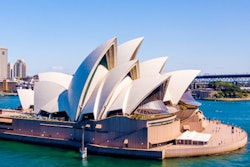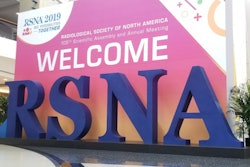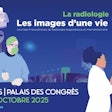
The organizers of the RSNA annual congress in Chicago and the radiology community must take urgent action to offset the meeting's airplane travel-related carbon dioxide (CO2) emissions, particularly because the organization is dedicated to human health, Dutch authors wrote in an article published online on 19 February by the European Journal of Radiology.
Not only is offsetting these emissions the right thing to do, it's doable, according to study authors Dr. Derya Yakar, PhD, and Dr. Thomas Kwee, PhD, both of the University of Groningen in the Netherlands.
"Offsetting this carbon footprint is cost-effective, and this initiative should be taken by the radiological community," the authors wrote.
One source of healthcare-associated greenhouse gas emissions is travel to medical and scientific conferences. Yakar and Kwee sought to calculate the airplane travel-related carbon footprint of the RSNA's annual meeting, its associated health burden, and the cost to offset these emissions via funding equivalent CO2-saving initiatives (i.e., supporting renewable energy projects, energy-efficiency improvements, and tree-planting activities).
In 2017, the RSNA hosted 52,657 attendees. The authors used data from 23,506 (44.6%) attendees whose country of origin information was available (11,223 from the U.S. and 10,684 from other countries). They calculated the total amount of air travel-related CO2-equivalent emissions based on round-trip economy class travel from the largest city nearest to Chicago's O'Hare International Airport, health burden in terms of disability-adjusted life years (DALYs) in future health damages in the global population, total CO2 offset costs, and CO2 offset costs per DALY. (One DALY is the loss of one year of healthy life. The measurement applies to the global population rather than to single individuals.)
Airplane travel-related CO2-equivalent emissions for RSNA 2017 totaled 39.5 million kg, causing an estimated 51.4 to 79 DALYs -- an emissions amount that is likely to be a serious underestimation, since it is based on less than half of the total number of attendees, Yakar and Kwee noted. For perspective, this amount corresponds to the quantity of CO2 produced in a year by 3,689 people living in high-income countries, 10,560 people living in middle-income countries, and 123,072 people living in low-income countries.
The authors estimated total CO2 offset costs for all airplane travel for the 2017 RSNA meeting using an average of $12 (11 euros) per ton of CO2-equivalent emission. They found that offsetting these emissions would cost $474,072 (439,500 euros), which translates to $6,001 to $9,223 (5,563 to 8,550 euros) per DALY averted.
"The incremental cost-effectiveness ratio of offsetting airplane travel-related greenhouse gas emissions was calculated [to be] ... far below three times the GDP per capita in the United States, and can thus be regarded as highly cost-effective according to the [World Health Organization's] threshold for cost-effectiveness," Yakar and Kwee noted.
In an invited commentary on the study, Dr. Bruce Haffty of Rutgers Cancer Institute in New Brunswick, NJ, and chair of the RSNA's board of directors, applauded the research.
"We [RSNA] will continue to provide an optimized forum for science, education, and technology as we reduce the carbon footprint of our organization and our annual meeting in service to members, attendees, and the planet we all share," Haffty wrote.

